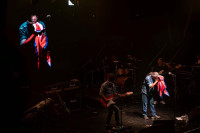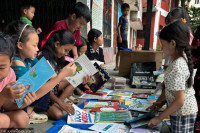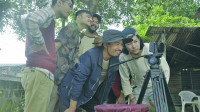Entertainment
The first ride
I was born in the remote, mid-Himalayan district of Jumla. Born at a time when development had just begun to change the lives in my district, I feel lucky that I had the chance to witness the first ray of hope that was going to change Jumla forever.
Utsav Thapa
I was born in the remote, mid-Himalayan district of Jumla. Born at a time when development had just begun to change the lives in my district, I feel lucky that I had the chance to witness the first ray of hope that was going to change Jumla forever. I am a student of civil engineering, and I know that the first infrastructure that is crucial for any development is transportation; and I am grateful that I got to see Jumla both with and without connectivity to the rest of Nepal.
Jumla Bazaar is the end point of the Karnali Highway. It was the last day of 2063 BS—Chaitra 30—that Jumla Bazaar first saw a vehicle. It is easy to remember the date because it was the last day of the year and there was an ongoing rumour that King Birendra had announced the project publicly when he visited Jumla. And the promise came to fruition on the last day of the year. And while tractors and jeeps were already in use locally, that day the connecting link to Surkhet was established.
On that day, there were 14-20 jeeps in line, headed our way. All the jeeps had turned red with the vermilion thrown at them by locals, as if welcoming not a piece of machinery but gods themselves. The drivers too admitted that they were having a time of their life, their faces and hair painted in jubilant red, their necks weighed down with hefty garlands. Makeshift gates were constructed at entrance points of every village. Children, including myself, ran after the caravan of jeeps, occasionally bursting out in a hurrah; everything was anew.
That day, when I returned home from school, I changed, and skipping lunch I rushed to Mahatgaun, a village some two miles away from my home, to witness the welcoming of the first-ever vehicle to be ushered into Jumla. I had never seen anything like it. It was a jeep with four wheels, approaching us, steady and smooth—a whole lot different from the loud and sloppy tractors we were familiar with.
What’s more, I even got a chance to ride on the hood of the jeep, an experience that has left an indelible mark on my mind. Even though it was a moment of pride and joy, there was also this fear being scolded by my mother once I reached home. But the fear was cast to the background by what then seemed like an once-in-a-lifetime moment.
Screaming all the way, we reached the Tudikhel ground, where the other vehicles were parked as well. We inspected every vehicle as if we were mechanical engineers checking out if anything was awry. I didn’t seem to notice dusk had already given way to night. Fearful of being reprimanded, I ran home. But once home, instead of yelling at me, mom asked me about the scenes in the village, with childlike curiosity. I was relieved, and explained what I had seen, in vivid detail.
Today, the longest ride I’ve taken on a vehicle is the night bus from Nepalganj to Kathmandu which is almost 14-hours long. But the ride I will cherish the most will forever be that short but exhilarating ride in Jumla. Even after all these years, even after countless other rides, the memories of that first ride are still fresh as they were yesterday.
Maybe it was because of the childlike wonder of seeing the first jeep, maybe it was out of the happiness that change was finally coming to our impoverished village; but even today, the word ‘jeep’ takes me back to that makeshift road and the chaos and fanfare of 2063. Some memories are forged to last a lifetime.
Thapa is a Civil Engineering student at the Institute of Engineering




 15.12°C Kathmandu
15.12°C Kathmandu










